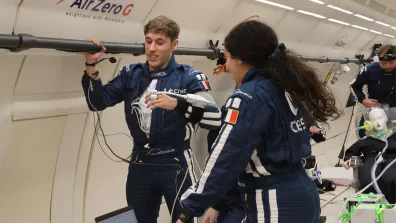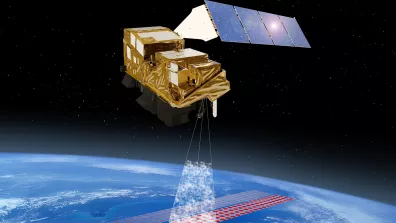The Ariane 6 Launcher Task Force consists of top management of ESA, as the overall Ariane 6 procuring entity and launch system architect, of the French space agency CNES as the launch base prime contractor, of ArianeGroup as the launcher system prime contractor and of Arianespace as the launch service provider. This group reports regularly on the new Ariane 6 launcher.
Key milestones since inaugural flight
These milestones have been conducted since the last joint update:
9 July: launch of Ariane 6, Europe’s Spaceport, French Guiana
The first launch of Ariane 6 occurred on 9 July 2024 from Europe’s Spaceport in French Guiana, completing its mission of releasing several varied satellites into a circular Earth orbit and restoring Europe’s independent access to space while demonstrating the versatility of the Ariane 6 upper stage, with two successful ignitions of the Vinci engine.
August: finished first investigations into inaugural flight profile
Analysis of the flight data confirms the excellent behaviour and performances of the launch vehicle with a very limited number of deviations compared to predictions.
A few unexpected behaviours of the whole launch system were recorded during the technology demonstration phase of the mission. Their initial analysis is now complete. After the successful first flight there are no showstoppers for the second Ariane 6 mission.
The investigations included analysing why re-ignition of the upper stage Auxiliary Propulsion Unit (APU) did not occur as planned at the beginning of the long coasting phase of Ariane 6’s inaugural mission. Analysis shows that one temperature measurement exceeded a pre-defined limit and that the flight software correctly triggered a shut down, entering the long coasting phase without the APU thrust and so degrading the proceeding of the demo phase. As a consequence, the third ignition sequence of the Vinci engine was not ordered by the flight software. The upper stage was passivated as expected.
Based on the observed behaviour of the APU in flight, the ignition preparation sequence (APU chill-down sequence) will be changed in the flight software to improve ignition conditions and solve the identified anomaly. The updated software is already being tested to be applied on the coming flights.
Ariane 6 is an all-new design, created to succeed Ariane 5 as Europe's heavy-lift launch system. With Ariane 6's upper stage restart capability, Europe's launch capability will be tailored to the needs of multiple payload missions, for example to orbit satellite constellations. This autonomous capability to reach Earth orbit and deep space supports Europe's navigation, Earth observation, scientific and security programmes. Ongoing development of Europe's space transportation capabilities is made possible by the sustained dedication of thousands of talented people working in ESA's 22 Member States.





